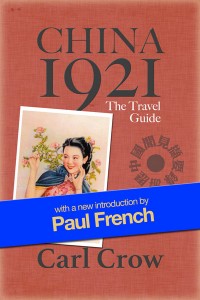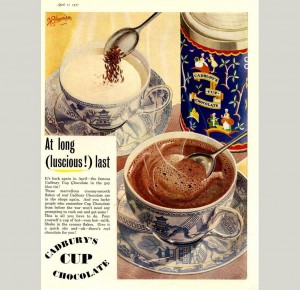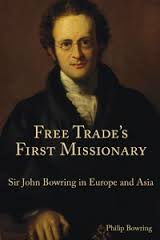Posted: September 2nd, 2014 | No Comments »
I’m delighted to have contributed a foreword to a new e-book edition of Carl Crow’s Travelers’ Handbook for China – (here on Camphor Press’s site, at amazon.co.uk and here on amazon.com) first published in 1913, but here in its 1921 edition courtesy of the excellent little publishing house of Camphor Press in Taiwan. It’s been a decade since I published my biography of Crow but I’ve never stopped finding out new snippets about his life and times in China and new audiences interested in his experiences and thoughts on China during his sojourn in Shanghai between 1911 and 1937. Original copies of the Travelers’ Handbook, any edition, are hard to find these days and often expensive when you do find them so this new edition solves a lot of problems. If you live, work, have visited, are visiting or have any interest in China then this is a fantastic read. Throw out the Rough Guide, loose the Luxe, forget the Lonely Planet….China 1921 is all you need!!

Set the time machine for China, the year 1921. Experience first-hand the Middle Kingdom’s Golden Age of Travel, a time when steamships and railways had opened up new possibilities for the adventurous sojourner, yet the country had “lost none of its unique charm†and remained “as interesting and strange as it was to Europeans who more than five hundred years ago read Marco Polo’s amazing account of the land of the Great Khan.â€
This Camphor Press book is a specially abridged version of the original The Travelers’ Handbook for China by Shanghai-based American newsman Carl Crow. It comes with maps, illustrations, and has a new introduction from Paul French (Carl Crow biographer and author of the true crime bestseller Midnight in Peking).
China 1921 describes a country in flux, modernising yet still Medieval in places, before its rich culture was devastated by war, Communism, and rapid economic development. Readers will find a land of thriving religious centers, exquisite arts and crafts, striking regional diversity, and a countryside teeming with fauna (“Wild game abounds in all parts of China,†Crow tells the would-be sportsman).
There are comprehensive sections on “the great semi-foreign port of Shanghai, the mysterious capital, Peking, the southern metropolis, Canton, the tomb of Confucius,†mountain retreats and beach resorts where one could escape the summer heat, and also details on less accessible destinations. “The more venturesome who are willing to leave the railways, steamship lines and hotels, travel on wheelbarrows, donkeys, or in sedan chairs and junks, and live in native inns, can visit any part of the country at small cost, and enjoy rare experiences.â€
This was the best guide of its time, an upbeat but honest look at a now-vanished China. Crow’s exuberance is perfectly captured in his assurance about travel safety: “Robbers and pirates exist, of course, and there is usually a revolution or rebellion going on in some part of the country but these things add zest rather than danger to the journey.â€
Posted: September 1st, 2014 | No Comments »
Blatant self-promotion on this Bank Holiday Monday. A day off, a time to read, but probably not much time, so perhaps a Penguin Short is the ideal solution to a book in a day….I can provide!!

The Badlands, a warren of narrow hutongs in the eastern district of pre-communist Peking, had its heyday in the 1930s. Home to the city’s drifters, misfits and the odd bohemian, it was a place of opium dens, divebars, brothels, flophouses and cabarets, and was infamous for its ability to satisfy every human desire from the exotically entertaining to the criminally depraved. These vignettes of eight non-Chinese residents of the precinct White Russians, Americans and Europeans bring the Badlands vividly back to life, providing a short but potent account of a place and a way of life until now largely forgotten, but here rendered unforgettable.

Betrayal in Paris – At the conclusion of ‘the war to end war’, the victorious powers set about redesigning the world map at the Paris Peace Conference. For China, Versailles presented an opportunity to regain territory lost to Japan at the start of the war. Yet, despite early encouragement from the world’s superpowers, the country was to be severely disappointed, an outcome whose consequences can still be felt today.
Posted: August 31st, 2014 | No Comments »
Came across this 1951 advert for Cadbury’s Cup Chocolate from 1951. Cadbury’s were clearly keen to establish drinking chocolate as an English tradition and luxurious habit and so chose to show chocolate being drunk from a couple of lovely Chinoiserie willow pattern cups and saucers…..

Posted: August 30th, 2014 | No Comments »
Philip Bowring has published a book about his ancestor John, the Governor of Hong Kong for most of the 1850s….

Reformer, intellectual, colonial governor, Sir John Bowring (1792–1872) was the archetype of the ambitious men who made Britain the leading global power in the 19th century. Born to a modest trading family, he showed an aptitude for languages which led him to literature, then to radical politics in the struggles for liberty in France, Spain and Greece. Taken up by the philosopher Jeremy Bentham, he became a figure in the literary world. But his emphasis was on action rather than theories. He became a high-profile advocate of free trade and a liberal foe of Karl Marx. As member of parliament he supported full suffrage and other radical causes. He modernized Britain’s public accounts, invented the florin as a first step to decimalization, and became an industrial entrepreneur. Losing his money in the 1848 slump, he took a job as consul in Canton, which led to the governorship of Hong Kong. As Britain’s plenipotentiary in East Asia he negotiated a key treaty with King Mongkut of Siam but also started a war with China. His term as Governor of Hong Kong (1854–59) was plagued with problems. But there as elsewhere he left a legacy of liberal ideas.
Bowring’s impact was spread over so many fields that his name has been eclipsed by those with a narrower focus. This book brings his life and disparate achievements together, with a particular emphasis on his role in promoting free trade and his much criticized career in Asia.
Philip Bowring is a journalist based in Asia since 1973 variously as correspondent for the Financial Times, editor of the Far Eastern Economic Review, and columnist for the International Herald Tribune, Wall Street Journal and South China Morning Post. He is distantly related to Sir John Bowring.
Posted: August 29th, 2014 | No Comments »
Those Peking loving Danes, Lars Ulrik Thom and Simon Rom Gjeroe, that run the excellent Beijing Postcards store on Nanluoguxiang, keep coming up with intersting ideas for talks exploring the city’s history. The latest is this Saturday at The Hutong….
Peking – City of Segregation

Did you know that Beijing was once a deeply segregated city? People from the South of town could not freely marry people from the Northern part. This did not change till 1902.
Beijing during the Qing dynasty was a city under occupation. Around the palace lived the Imperial clan and the soldiers of the 8 banners, and below them the Chinese civilians. These two societies were divided both by law and physically by Walls and gates.
The reason for this was that the rulers were afraid of losing their ethnic identity. Because the Qing rulers all belonged to a conglomeration of tribes called the Manchu’s. These were people of the plains that culturally were very different from the Han-Chinese. The women of the Manchu’s for instance did not bind their feet and rode horses. Culturally the Manchu’s felt a much closer bund to the Mongolian’s. But despite their vigorous efforts the virtues of nomadic living eventually proved difficult to preserve…
“City of Segregation†is the story of how the Manchu’s occupied the Capital of Beijing for an impressive almost 280 years, how they changed the city and still strongly helped influence our notion of “old Beijing†today. Very likely the ancestors, of your small talking bird-raising Beijing neighbor, originally belonged to a whiplashing nomadic people of the plains.
Date: August 30, Saturday, 15:00
Price: RMB 100
If you want to sign up please click here.
Beijing Postcards is a company that is dedicated to modern Chinese history, with an emphasis on Beijing. It can be difficult to understand the complex nature of Chinese society today. To help, Beijing Postcards offers a large variety of talks presenting interesting subjects on Beijing and China’s history and culture in an easily accessible way. They also offer tailor-made talks for corporate events, clubs, private gatherings, and more. Beijing Postcards owns a large collection of old photographs from China which has been collected from all over the world. These are actively used in their presentations. The name, Beijing Postcards, symbolizes the passing on of Chinese history and culture in a way that everybody can understand and appreciate it.
Posted: August 28th, 2014 | No Comments »
Just a week or so ago no the sad news of Lauren Bacall’s death I noted that her one China feature – Blood Alley – was not as good unfortunately as the Steve McQueen movie The Sand Pebbles, which has a slightly similar plot. Well, now, sadly, Richard Attenborough has died, one of the stars of The Sand Pebbles. The movie, released in 1966, was adapted from the Richard MacKeena novel and is a great film (in my opinion). Engineer Jake Holman (McQueen) arrives aboard the gunboat U.S.S. San Pablo, assigned to patrol a tributary of the Yangtze in the middle of exploited and revolution-torn 1926 China. His iconoclasm and cynical nature soon clash with the “rice-bowl” system which runs the ship and the uneasy symbiosis between Chinese and foreigner on the river. Hostility towards the gunboat’s presence reaches a climax when the boat must crash through a river-boom and rescue missionaries upriver at China Light Mission. And Candice Bergen happens to need rescuing too!! There’s some spectacular location shooting in Taiwan too.
Arguably the best supporting role in the film is Attenborough’s as Frenchy Burgoyne who spends plenty of time in a Chinese whore house, marries a whore and eventually comes to a rather rum ending. The bar room scenes, including a good brawl, are all signature Attenborough moments in the movie for which he got a Golden Globe but missed an Oscar….Worth a watch on DVD if you can find a copy….




Posted: August 27th, 2014 | No Comments »
Frances Wood’s addition to the growing Penguin China & World War One series (which includes my own Betrayal in Paris) is now available – Picnics Prohibited (here on Amazon.co.uk and here on Penguin Australia)….

At the time of the First World War, the Chinese republic was in its infancy. It had joined a number of international organizations and ratified the Hague Conventions, but found its diplomatic efforts hampered by its young, inexperienced leadership, its factional and regional divisions and the foreign-held treaty ports and concessions held over from the imperial period. The foreign powers treaded a fine diplomatic tightrope, caught between carrying out their patriotic duty to support war efforts and making sure their ‘hosts’, the Chinese, did not take advantage of the turbulence to gain the upper hand against the imperialists. For the Americans, British, French, German and Japanese, the legation quarters became a microcosm of the intrigues and conflicts back home.
Posted: August 26th, 2014 | No Comments »
Alexandra Needham’s Go West! seems to be a good round up of the British nutters who went West and got themselves into all sorts of trouble….

Between Marco Polo in the late 13th century and French priest Abbe Huc in the 1840s, practically no European set foot in western China – then considered one of the most difficult regions in the world for road, rail and river navigation given its formidable topography of high mountains, deep valleys and great rivers. This isolation gave western China somewhat of a reputation amongst westerners as a hidden El Dorado – a place of great wealth and fertility. From the 1850s onwards, as the Victorian age was in full swing, Britons – and other westerners – began to develop a taste for overseas adventure, exploration and trade as the British Empire expanded its reach across the globe. Britain already had a strong hold in Hong Kong and was present in coastal treaty ports in China, but the Chinese market had not yet produced the massive increase in trade that many colonial expansionists had hoped for. A few adventurous souls began to believe that if access could be gained to the whole of China, through its inland ports, then access could be gained to the world’s largest market with some 400 million people – the size of the whole of Europe. This was not only access for trade purposes. Missionaries believed that the scope of the work they could do in inland China was endless, with a huge population most of whom had never heard of the word of God; and botanists and natural scientists wondered at the myriad exotic and as yet unknown species which flourished in China’s sub-tropical south-western corner. Others were just curious and had an appetite – and the budget to match – for visiting foreign faraway lands and the challenge of the unknown.Politically, opening up inland China was important to the British. Their aim was to develop a trade route from British India and Burma through China to British settlements in China’s coastal cities such as Canton and Hong Kong, as part of the competition between western powers for influence in Asia known as the Great Game. The French in particular were Britain’s adversaries for influence in western China, given the existing French stronghold in Indochina. French hopes were to reach the south-western Chinese province of Yunnan via the Mekong river through Vietnam, Cambodia and Laos. On the basis of these dreams, hundreds of British travellers and explorers set their sights on the Yangtze River – the main access route to the heart and western regions of China – and in particular the region of Chongqing (then known as Chungking) in the western Chinese province of Sichuan – the biggest metropolis of western China. It was – and still is – a gritty inland city, worlds apart from the relatively cosmopolitan cities of China’s eastern seaboard. This book tells the story of their lives in this inland treaty port city, and surrounding region, from the 1870s to just after the Second World War when, for several years, Chungking served as the capital of China. It details the achievements and lasting impact of the British in western China in the fields of diplomacy, trade, culture, science, education and religion. This includes introducing cricket and the first football match to the region; the printing press and the camera; the first steamship to sail through the treacherous Three Gorges – now tamed by the world’s largest dam; and the inspiration for the longest book on China ever to be written in the English language. The idea for this book came during my own time spent living in Chongqing from 2007 – 2010 as Political Consul at the British Consulate-General in the city. Chongqing was not the easiest of diplomatic postings. I started to wonder about the Europeans who came to Chongqing 150 years before me, and the city they must have experienced. This book stands as a record of Chongqing’s European past and the contributions of many foreigners to the city’s development, lest it should all soon disappear amidst China’s rush to develop.











